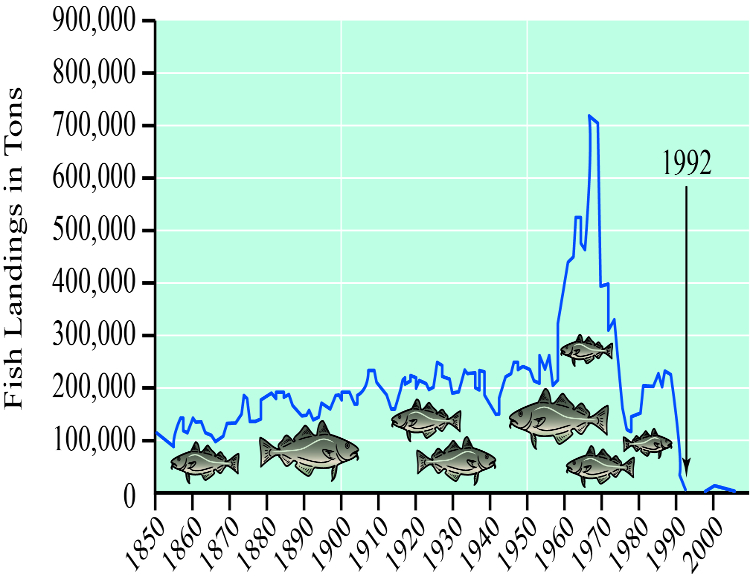Populations that can undergo abrupt (discontinuous) changes in size as a function of harvesting rate are difficult to manage. The reason is that, even if the population is currently relatively large in size, it can suddenly collapse as a result of a small increase in harvesting. There is some suggestion that the collapse of the Atlantic cod fishery in 1992 might have been due to a similar phenomenon. For example, the graph below shows the amount of fish harvested from the population over time. Starting in the 1960’s the harvest rate began to increase, resulting in larger catches over time. As the intensity of harvesting continued to increase through the 1970’s and 1980’s however, the population size started to decrease, and it eventually underwent a dramatic collapse in 1992.

For this reason several mathematical studies have been conducted to determine if there are ways to forecast such impending collapse instead of relying on estimates of current population size. For example, there is some suggestion that the nature and magnitude of fluctuations in population size change in predictable ways as harvesting rate increases towards a point of population collapse (Dai et al. 2012).
References
Dai, L., D. Vorselen, K.S. Korolev, and J. Gore. 2012. Generic indicators for loss of resilience before a tipping point leading to population collapse. Science 336:1175-1177
Cod data are from http://www.grida.no/graphicslib/detail/collapse-of-atlantic-cod-stocks-off-the-east-coast-of-newfoundland-in-1992_11e4#